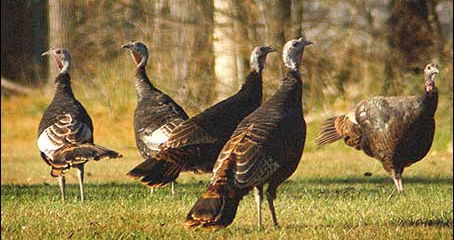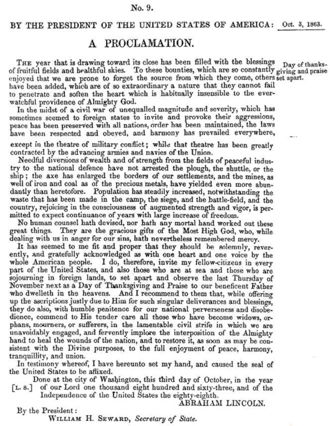
The following article by David Strange originally appeared in The Courier-Journal on 21 Nov 2012. It is archived here with additional information for your reading enjoyment.
Have you ever "heard" of a turkey "herd"?
Well if not, I have certainly got some things to tell you about on this Thanksgiving week.
If you ever visit the Lloyd House Museum in Mount Washington, look for a homemade model that hangs on the wall there. Most people do not notice it, and the ones that do probably wonder just what it is depicting.

It is a model of men and boys herding turkeys to market.
Yes, herding turkeys.
In the early days of America, from the early 1800's until as late as the 1940's, farmers could raise a good crop of turkeys, but they had no good way to get them to market. In 1901, for example, a survey of Bullitt County farms lists 3,000 turkeys in the county. In 1903 there were five thousand. I have an early Bullitt County advertisement by J.B. Myers listing turkeys as one of his farm's products.
But in the days before trucks, it was difficult to transport turkeys in a large scale.
So sometimes the farmers would resort to herding them to town on foot, much like cattle. There are reports in the 1830's in the eastern U.S. that as many as 7,000 turkeys at a time would be herded in this way.
As you might imagine, turkeys present some unusual challenges to move along a road.
I am told, for example, that turkeys used to be herded from Bullitt County all the way into the market in Louisville. Depending on the farm, the turkeys might be herded to a railroad depot for loading there.
Can't you just imagine that?
In 1916, when cars were rare and roads still primitive, I have read that 431 turkeys were walked down the road to market, fetching three dollars each.
Now, walking turkeys a long distance has its challenges.
Linda Anderson tells me, for example, that farmers had to protect the feet of the turkeys on the long march. I have read where some farmers had special slippers for the feet, while others would prepare the turkeys by marching them through some warm tar, and then across some sand, creating some protection for the soles of their feet.
If the march lasted into evening, or even if the sky became dark, the turkeys would take to the trees to roost for the night, sometimes breaking the limbs from the weight. The farmer could not keep them from it, so he could only plan for it, and get up early enough the next morning to get them back on the trail when they came back down, else they would stray off everywhere.
Farmers would usually lead the turkeys with a wagon, sprinkling a little cracked corn along the way, to encourage the turkeys in the right direction. Some farmers would use little bells on the main hen to lead the way. Boys with switches would travel along the sides, keeping all together. Some farmers have even been known to use specially trained dogs, much like sheep dogs.
Can't you just imagine that picture? Hundreds a somewhat contrary turkeys walking along an old road to Louisville?

The practice died out in the 1930's and was pretty much gone by World War II, though it is still done occasionally in some parts of America.
And speaking of America, did you know that turkeys originated in North America? And that Benjamin Franklin once proposed that the turkey should be the symbol of America, rather than the Bald Eagle? Of course, he was talking about the colorful, intelligent, resourceful wild turkey; not the pale and seemingly witless domesticated birds of today.

Speaking of which, here's a little turkey trivia for you:
The costume for the public television character, Big Bird, is made of some four thousand white turkey feathers, died yellow.
Despite tradition, it is not known if the Pilgrims had turkey for dinner. It is only known that they had "fowl." The idea of having turkey for holiday dinner was partly a result of marketing, but became widely popular with the success of the story "A Christmas Carol," by Charles Dickens, first published in 1843.
Turkey dinner has always been a tradition in my family. My grandmother would even keep the wishbone from the turkey each year, collecting them, and using them for ornaments on her Christmas tree. Sometimes wrapped in aluminum foil for the sparkle, and sometimes not, the odd collection reminded her of happy years gone by.And so it does for me. Despite a little protest from my wife each year, I still have those wishbones from Grandma's turkey dinners long ago, placing them as part of a special memento-decorated Christmas tree at our home.
Thanksgiving became an official holiday in the United States on October 3, 1863, in the midst of the Civil War, by a proclamation issued by President Abraham Lincoln at the urging of Editor Sarah Josepha Hale. It has been celebrated as such every year since then. Allow me to close this week's column on a serious note with that proclamation:
The year that is drawing towards its close, has been filled with the blessings of fruitful fields and healthful skies. To these bounties, which are so constantly enjoyed that we are prone to forget the source from which they come, others have been added, which are of so extraordinary a nature, that they cannot fail to penetrate and soften even the heart which is habitually insensible to the ever watchful providence of Almighty God.
In the midst of a civil war of unequalled magnitude and severity, which has sometimes seemed to foreign States to invite and to provoke their aggression, peace has been preserved with all nations, order has been maintained, the laws have been respected and obeyed, and harmony has prevailed everywhere except in the theatre of military conflict; while that theatre has been greatly contracted by the advancing armies and navies of the Union.

Needful diversions of wealth and of strength from the fields of peaceful industry to the national defense have not arrested the plough, the shuttle, or the ship; the axe had enlarged the borders of our settlements, and the mines, as well of iron and coal as of the precious metals, have yielded even more abundantly than heretofore. Population has steadily increased, notwithstanding the waste that has been made in the camp, the siege and the battle-field; and the country, rejoicing in the consciousness of augmented strength and vigor, is permitted to expect continuance of years, with large increase of freedom.
No human counsel hath devised nor hath any mortal hand worked out these great things. They are the gracious gifts of the Most High God, who, while dealing with us in anger for our sins, hath nevertheless remembered mercy.
It has seemed to me fit and proper that they should be solemnly, reverently and gratefully acknowledged as with one heart and voice by the whole American people. I do therefore invite my fellow citizens in every part of the United States, and also those who are at sea and those who are sojourning in foreign lands, to set apart and observe the last Thursday of November next, as a day of Thanksgiving and Praise to our beneficent Father who dwelleth in the Heavens. And I recommend to them that while offering up the ascriptions justly due to Him for such singular deliverances and blessings, they do also, with humble penitence for our national perverseness and disobedience, commend to his tender care all those who have become widows, orphans, mourners or sufferers in the lamentable civil strife in which we are unavoidably engaged, and fervently implore the interposition of the Almighty Hand to heal the wounds of the nation and to restore it as soon as may be consistent with the Divine purposes to the full enjoyment of peace, harmony, tranquility and Union.
In testimony whereof, I have hereunto set my hand, and caused the seal of the United States to be affixed.
Done at the city of Washington, this third day of October, in the year of our Lord one thousand eight hundred and sixty-three, and of the independence of the United States the eighty-eighth. – Abraham Lincoln.
Copyright 2012 by David Strange, Shepherdsville KY. All rights are reserved. No part of the content of this page may be included in any format in any place without the written permission of the copyright holder.
The Bullitt County History Museum, a service of the Bullitt County Genealogical Society, is located in the county courthouse at 300 South Buckman Street (Highway 61) in Shepherdsville, Kentucky. The museum, along with its research room, is open 10 a.m. to 4 p.m. Monday through Friday. Saturday appointments are available by calling 502-921-0161 during our regular weekday hours. Admission is free. The museum, as part of the Bullitt County Genealogical Society, is a 501(c)3 tax exempt organization and is classified as a 509(a)2 public charity. Contributions and bequests are deductible under section 2055, 2106, or 2522 of the Internal Revenue Code. Page last modified: 12 Sep 2024 . Page URL: bullittcountyhistory.org/memories/turkeyherd.html